What Really Happened at the Penn State Protest Against Proud Boys Founder Gavin McInnes
October 25, 2022STATE COLLEGE, Pennsylvania - It was a golden October afternoon in Pennsylvania’s so-called “Happy Valley,” and a group of Penn State students had gathered in a small park overlooking the school’s athletic field.
They were there to put a plan in motion: to disrupt and shut down a campus “comedy” event slated for later that evening, featuring Proud Boy founder Gavin McInnes and professional right-wing troll Alex Stein. (Disclosure: Gavin McInnes, who founded the Proud Boys in 2016, was a co-founder of VICE in 1994. He left the company in 2008 and has had no involvement since then.)
Hours after that preliminary meeting, riot police and officers mounted on horseback deployed to Penn State campus to counter the angry crush of hundreds of student protesters outside the Thomas building where the event was being held. Uniformed Proud Boys showed up. A group of far-right agitators in all black sprayed students and media with pepper spray.
And eventually, before Stein and McInnes’ event—titled “Stand Back & Stand By” in a nod to former President Donald Trump’s infamous aside addressing the Proud Boys in a 2020 presidential debate—had even taken place, the university, citing “escalating violence” canceled it entirely.
The earlier meeting in Sidney Friedman Park, about 15 minutes walk from the campus building where Stein and McInnes would later speak, was convened by an unofficial student group called SCDS: Student Committee for Defense and Solidarity.
“Let’s shut this shit down,” said one of the lead organizers, who gave his name only as José because he said he was concerned about future repercussions from the university.
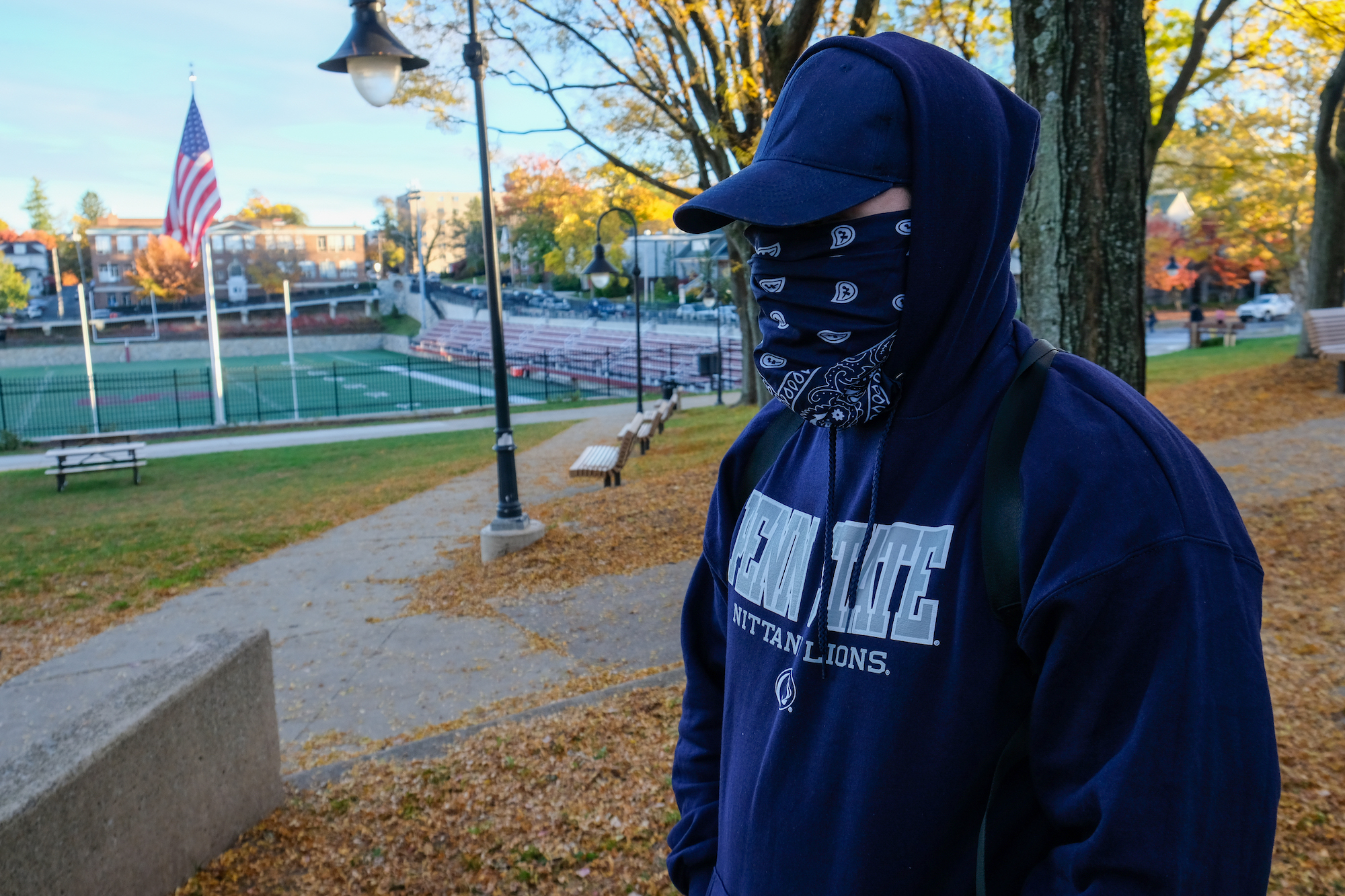
Dressed in blue jeans, a Penn State hoodie, a navy bandanna pulled up over his nose and a cap pulled down low, José had positioned himself as a commander of the small informal battalion of about two dozen students before him—mostly young and white.
“It’s a system of violence, and we’re here to rebel against that,” José told the crowd, as he explained that they weren’t just protesting McInnes and Stein, but the university administration for allowing the event to take place in the first place.
Many of the students at the meeting seemed trepidatious, unsure of what they were getting themselves into. The majority of them had zero prior experience in antifascist activism, having likely only seen social media videos showing black-clad activists clashing with the far-right in cities across the U.S. in recent years.
When one of the students pulled up a photo someone had sent them showing a massive police presence on Penn State campus, José told them not to worry. “This is nothing to be afraid of, this is just intimidation,” he said. “They have tanks and cars, we have the people.”
José said that Penn State was chiefly concerned in protecting their image, which they didn’t want tarnished by a ruckus on campus. “They want to protect their brand,” José said. “This is Happy Valley.” (The area gained its moniker not for its rural surroundings and rolling hills, but for its resilience during the Great Depression; it was able to stay afloat thanks to business from the university). Leftist students say it’s an empty label, intended to whitewash problems and prioritize the bottom line.
McInnes and Stein had been invited to Penn State by Uncensored America, a student group dedicated to trafficking far-right ideas and personalities onto college campuses under the guise of “free speech” (José described Uncensored America as “incel dweebs.”) The group, which also has chapters in Wisconsin and Tennessee, pitched the event as an opportunity to hear “different political viewpoints in a funny and entertaining way,” and the university agreed to release nearly $7,000 in student programming funds to cover flights and honorariums for McInnes and Stein.
News of the event immediately kicked off an uproar among the student body. McInnes, who despite claims that he stepped away from the Proud Boys, maintains extensive ties to the far-right street-fighting gang he founded. Top-ranking members of the group have been charged with federal seditious conspiracy charges for their alleged role in the Capitol riot, and the gang’s foot soldiers are known for violent brawls across the country. McInnes has previously used his platform to stoke conspiracy theories about impending “extinction” of ““white majority countries,” made comments such as “Muslims are stupid,” and repeatedly expressed his desire to “smash commies.”
And Stein, who has also appeared in public with the Proud Boys, has built a reputation around misogyny and harassing women.
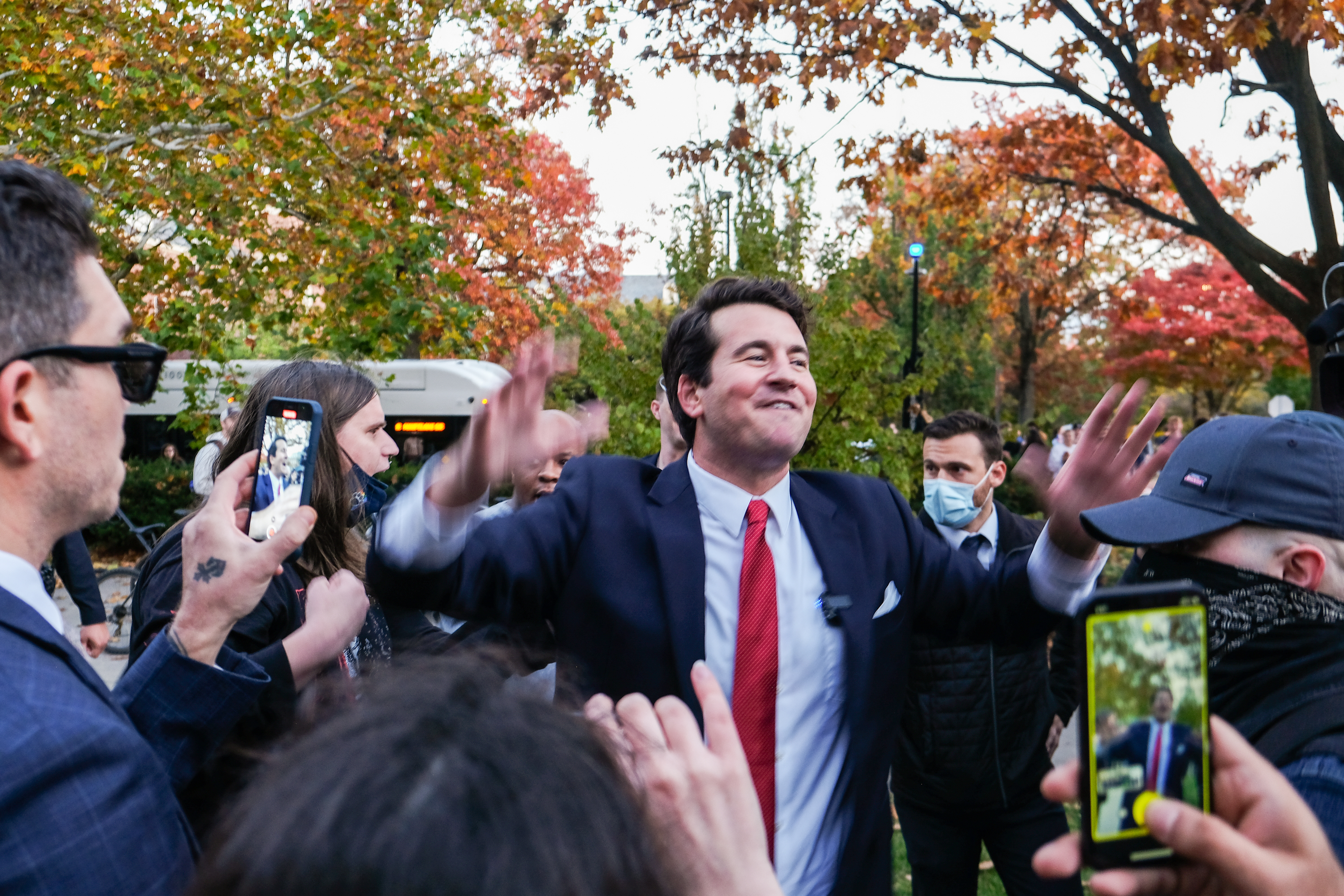
Penn State leadership put out a statement Oct. 11 condemning Stein and McInnes as “hateful and vitriolic” but contended that being a public university, their hands were tied in their obligation to uphold the First Amendment. In response, some students countered that the university had, in fact, rebuffed far-right speakers in the interest of public safety, in the past. In August 2017 (one week after the Unite the Right rally in Charlottesville), Penn State released a statement saying they’d rejected a request by white supremacist Richard Spencer to speak on campus over fears of violence.
Penn State administrators also announced “counterprogramming,” including one event called “Together We Are” that they said would “support and promote belonging and community.” SCDS launched a petition, which garnered over 3,000 signatures, calling on the university to cancel the main event, and make policy changes to the committee that allocated funding for it. They also said that administration’s “Together We Are” was designed to “sap energy away from student-led organizing and make it appear that they are not responsible for inviting danger into our community.” SCDS said they would hold their own protest.
As October 24 drew closer, the war of words between SCDS and the Penn State administration continued. University police and public safety released a statement condemning SCDS as an “unrecognized group” and said that its planned protest would “only serve to advance the goals of these individuals and the vile ideas they represent.”
“Provocateurs long nothing more than to fill a room with protesters and record it as content for their online platforms,” they wrote. Penn State Vice President Damon Sims also put out a statement, imploring students “not to take the bait,” by joining the protest.
SCDS remained resolute. “It is our duty to fight, it is our duty to win,” they wrote in a mass email sent to the student body.
While preparing for Monday, José and his fellow organizers studied past events where students had successfully run a speaker off campus. One example was an event at NYU in 2017, where student protesters successfully disrupted a speaking appearance by McInnes, who was ultimately forced off the stage amid boos and jeers from the crowd. Penn State students looked at an event at Howard University, also from 2017, where a convocation address by former FBI director James Comey was drowned out by students singing and chanting. The third example they studied was also from 2017, in Gainesville, Florida, when Spencer was heckled by University of Florida students.
SCDS had added their own slightly modernized flavor to those tactics: QR codes. The student protest was set to kick off at 6 p.m., two hours prior to Stein and McInnes’ event. During those two hours, organizers gave out materials to make protest signs and teach the crowd chants. They also distributed pieces of paper containing two QR codes. One was a ticket allowing them entry into the building, the other directed to a website that detailed their plan once they gained access into the event.
Students and allies trickled in by the hundreds to join the protest. Some were eager just to get a glimpse of notorious far-right actors like McInnes and the Proud Boys.
“I never thought I’d see one of these people in person,” said Jack Keough, a 19-year-old freshman majoring in biology.
Keough said he joined the SCDS protest rather than the university’s counterprogramming events because he felt strongly that “the way to beat these people is not to ignore them.” “I feel that racism is both prejudice and power,” said Keough. “If you allow these far-right groups to gain power and gain notoriety then ignoring them wont do anything.”
Olivia Karshner, a graduate student studying international politics, said that Penn State is betraying its own ethos by allowing McInnes and Stein to speak on campus. She pointed to the university’s “We Are” slogan, which originated in the 1940s when the school’s football team refused to play segregated universities and would not comply with requests to leave their Black players behind. “We are Penn State” became a rallying cry for racial inclusion and against segregation. “We made it our entire ideology,” said Karshner. “Events like this go against that ideology.”
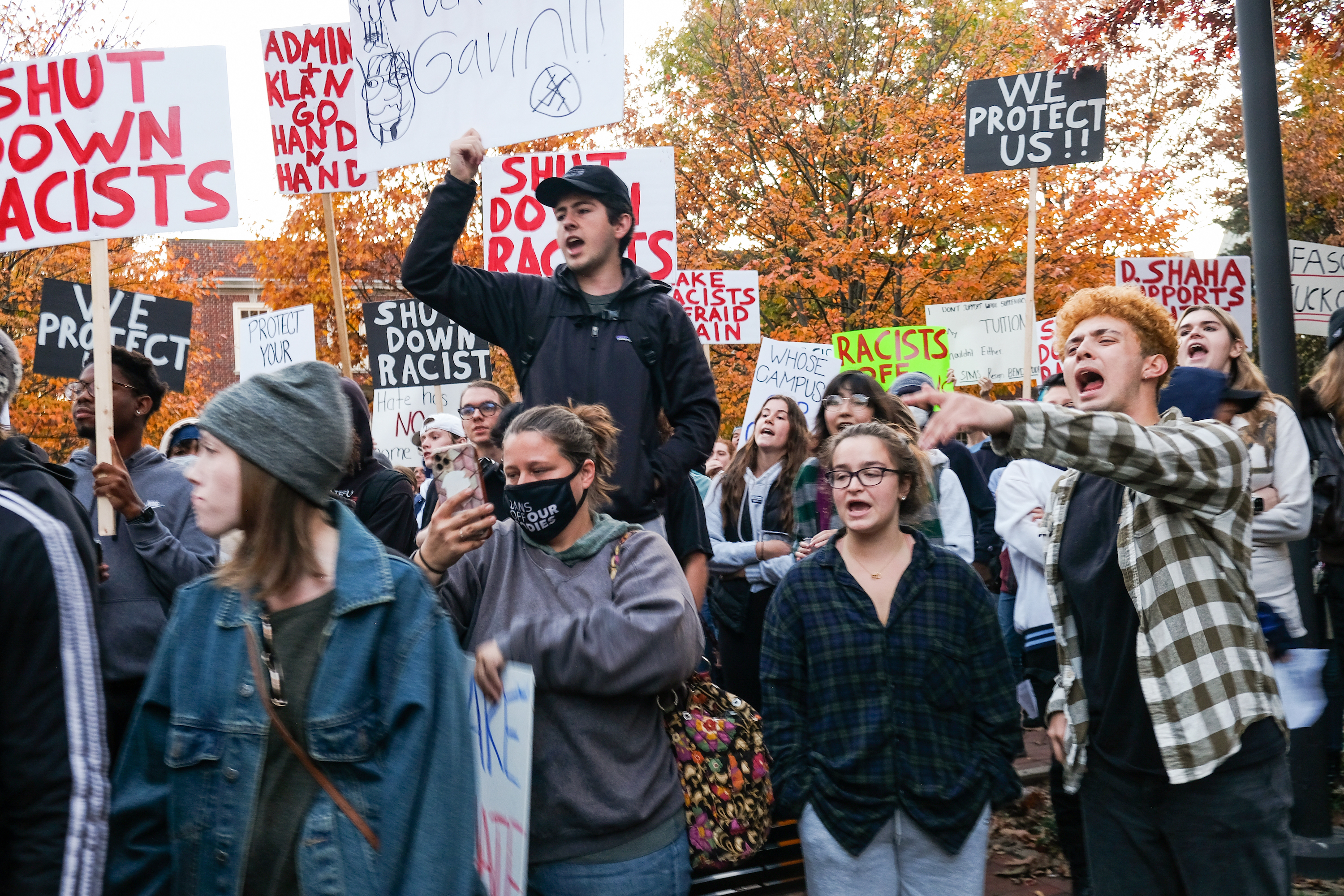
The atmosphere in the crowd abruptly shifted with the arrival of Stein and some of his supporters.
Stein strutted back and forth through the crowd, live streaming with his phone on a selfie stick, grinning, waving his arms wildly, as the crowd of protesters—who chanted “asshole” —grew increasingly angry. One student spat at him, leaving a visible white trail on the shoulder of his navy blue suit jacket. Even as tensions continued to rise, police did not intervene and escort him inside, allowing him to rile up the crowd for at least 15 minutes, all while filming and laughing. At one point, he commandeered a speaking lectern that had a Black Lives Matter sign on it. Later, Stein compiled his videos and published them as a reel on his social media channels, where he has hundreds of thousands of followers.
From there, the atmosphere continued to escalate. Two uniformed Proud Boys arrived separately, prompting outrage from the crowd. One of those Proud Boys was escorted into the Thomas building after a scuffle with protesters.
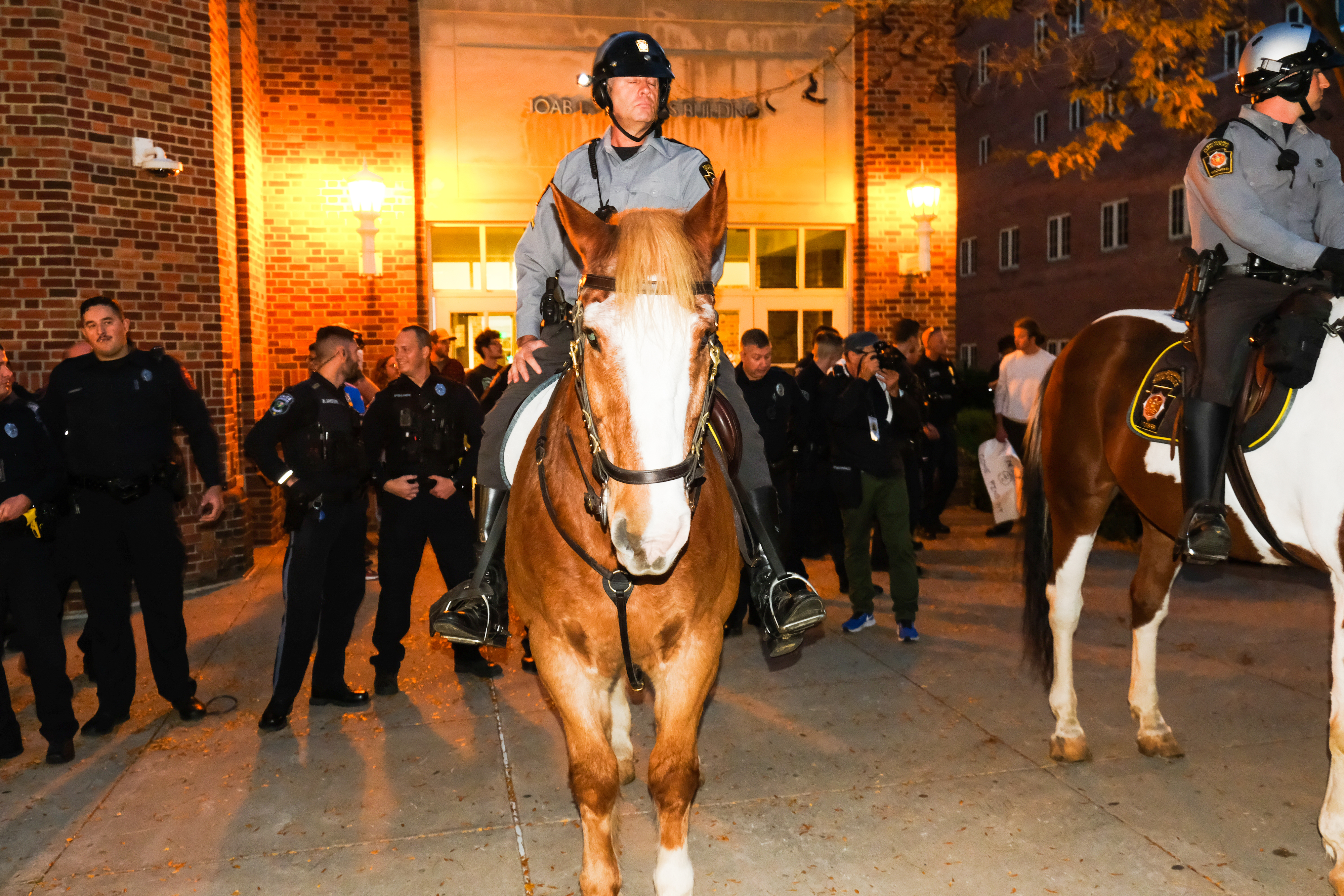
Penn State police brought out a dozen officers on horseback who forced the throng of protesters away from the Thomas building, which set off cries of alarm across the crowd. “Fuck them horses,” one protester shouted over the din.
The officers on horseback were joined by cops in riot gear and gas masks. Meanwhile, four far-right agitators with their faces completely covered and one wearing a helmet were surrounded by protesters, menaced protesters with a can of pepper spray. VICE News observed police doing nothing to intervene. One of the agitators emptied the can, spraying protesters and media who were present. The agitators left the scene, while the protesters tended to individuals who’d been hit badly with the chemical irritant.
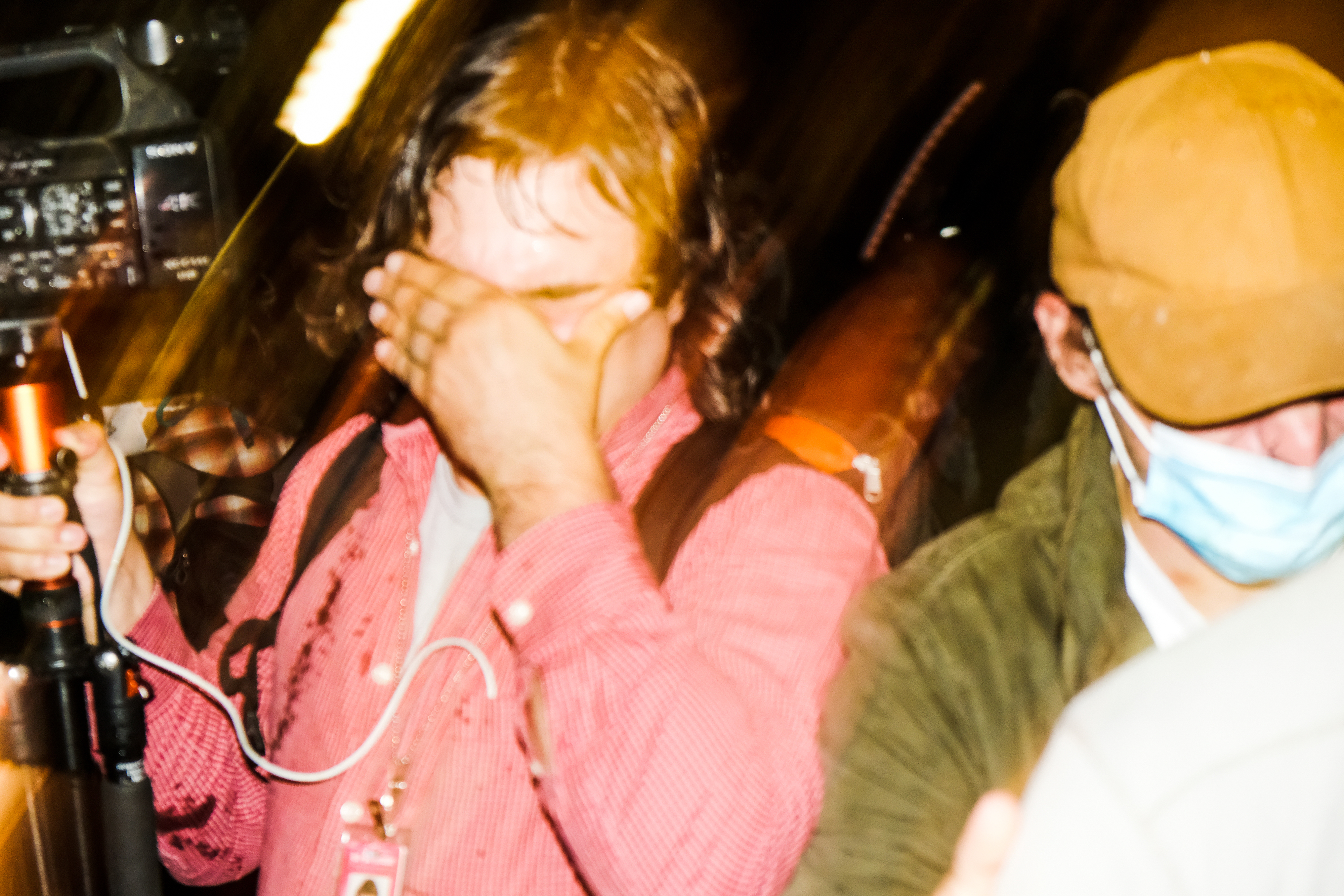
Shortly before 7 p.m. students received notice that police had declared an unlawful assembly. Around that time, rumors had been percolating through the crowd that “Stand Back & Stand By” had been canceled. Those rumors were confirmed at 7:19 p.m. through the university’s alert system. Student protesters cheered, crying “We did it” and chanting “Whose campus? Our Campus!”
The school put out a statement Monday night laying blame largely at the feet of the protesters for what transpired. “Demonstrations regrettably turned violent,” they wrote. “The climate in our nation has been polarized for quite some time. On campuses across the country, violence is proliferating and individuals are being intimidated and even harmed. This must stop.”
Small groups of ticket-holders who hoped to attend the event stood around, looking dejected. Meanwhile, one protest organizer with a megaphone wearing a T-shirt that said “Happy Valley” with the “Happy” crossed out in red pen, urged the protesters to disperse, framing it as an urgent safety matter. The Proud Boys would be exiting the building soon, she said, and would be “pissed” that the event had been canceled. The vast majority obliged. A few stuck around, hoping to encounter Stein, McInnes, or their supporters, on their way out. Through the glass-paned windows of the Thomas building, Stein was seen pacing, his jacket off, his shirt untucked, talking on the phone.
Stein was later seen exiting the Thomas building along with McInnes and Uncensored America founder Sean Semanko, and leaving the premises with a police escort.
In an email to the student body sent Tuesday morning, Penn State president Neeli Bendapudi recognized that Stein’s initial incursion into the student’s protest “raised the tension,” and in doing so, “contributed to the very violence that compromised their ability to speak.” She then added that Stein and McInnes would “celebrate a victory for being canceled” and scolded the student protesters. “The message too many people will walk away with is that one can manipulate people to generate free publicity,” Bendapudi wrote, “or that one can restrict speech by escalating protest to violence.”
A spokesperson for the university told VICE News that law enforcement was “not aware of any credible threats of violence related to this event” though police planned for “the worst-case scenario.” At least one student was arrested.
Follow Tess Owen on Twitter.
